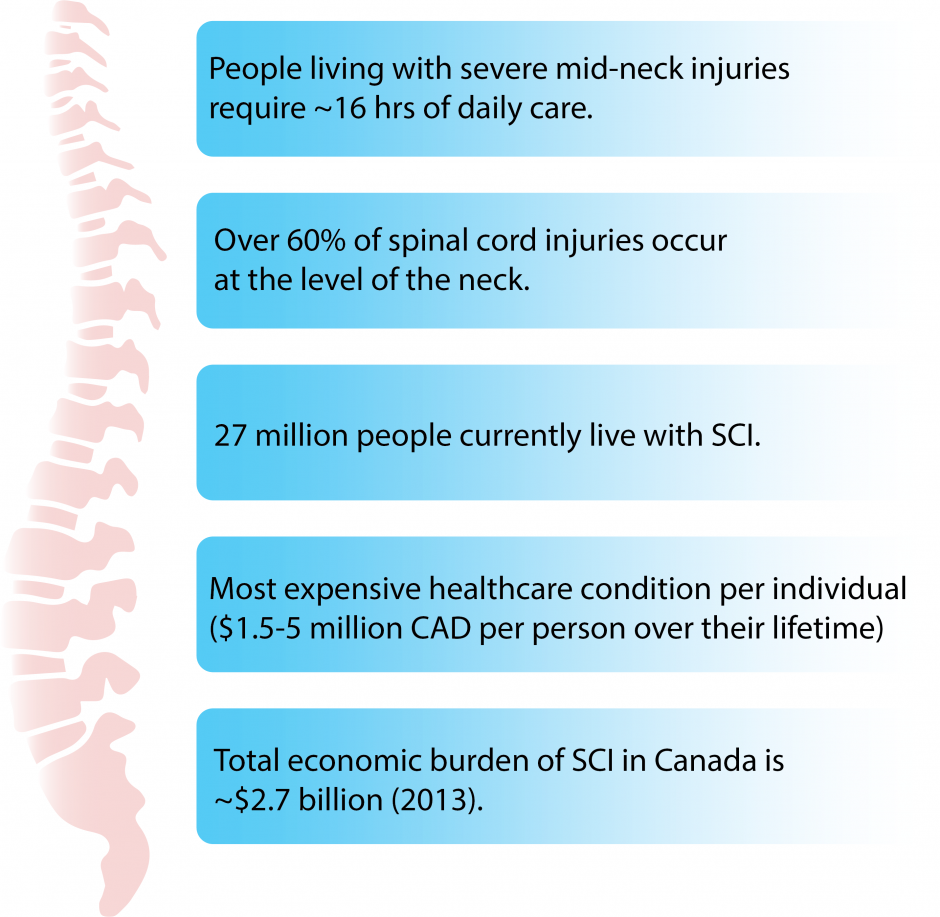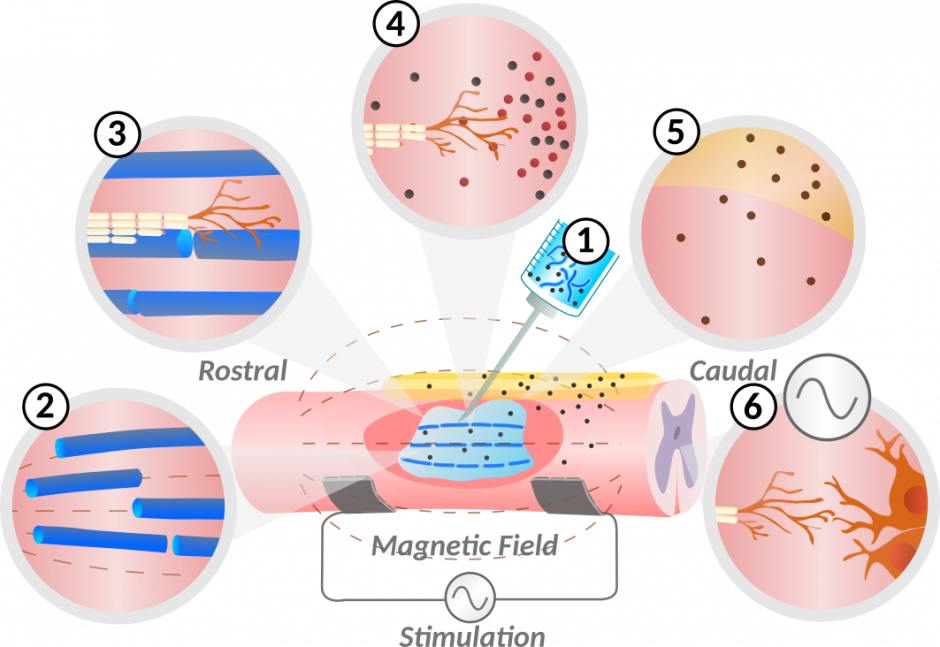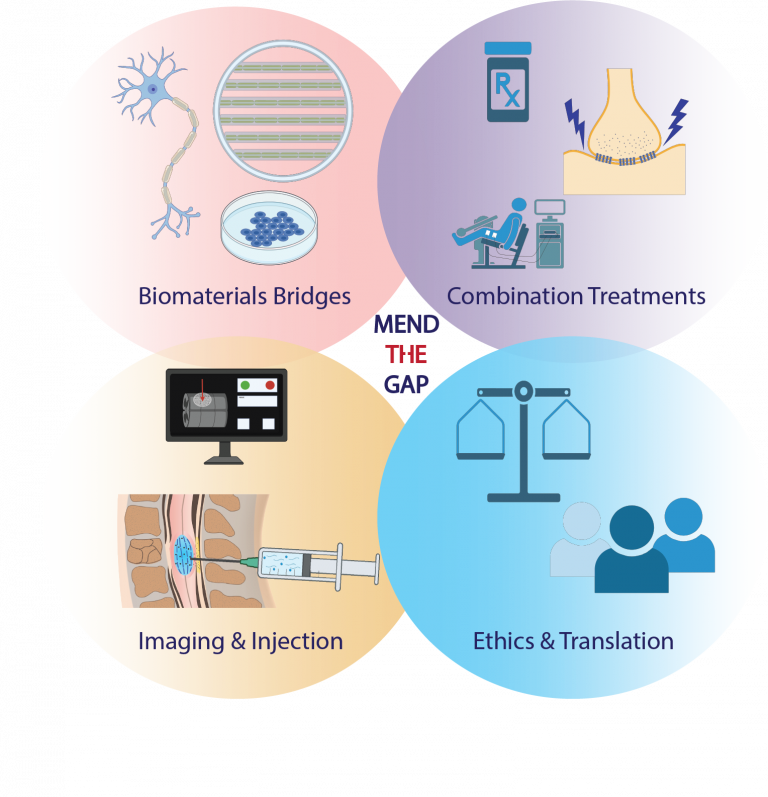Spinal Cord Injury

Spinal cord injury is a life-altering condition that often leads to paralysis, the loss of control over bowel, bladder and sexual functions, and other effects that limit independence and make individuals more susceptible to infection. Treatment options are mostly limited to rehabilitation paired with electrical stimulation of the spinal cord, often yielding little benefit. This is because the spinal cord does not regenerate. We want to change that.
Combination Approach to Treatment
Our Solution combines advances in drug delivery, tissue engineering and image guided surgery to develop a world-leading treatment. An injectable biomaterial is being tested to facilitate healing and regeneration of broken neural circuitry. It will be injected at the injury site and fill the gap in the spinal cord. The biomaterial has a specific architecture that enables regeneration of the spinal cord across the gap left by the injury. This structure that guides growth is combined with innovations in drug therapy and electrical stimulation to create the conditions for repair and reconnection. An image-guided surgical robot will visualize the tissue structures within the lesion and surrounding it, to guide the injection in the delicate cord. The research is guided by the needs of individual with spinal cord injury, their families and caregivers.

Research Themes

Theme 1: Biomaterials Bridges The manufacturing of injectable biomaterials that provide a soft scaffold to guide the regeneration of nerve fibres.
Theme 2: Combination Treatments The combination of drugs, rehabilitation training and electrical stimulation to (a) promote axon growth, (b) mitigate scar tissue formation, and (c) enhance the integration of grown axons into functional spinal circuitry.
Theme 3: Imaging & Injection The development of a method to inject biomaterials into the spinal cord without causing further damage, using biomedical imaging and artificial intelligence.
Theme 4: Ethics & Translation The understanding of human preferences and values to help us identify the most suitable individuals for an experimental spinal cord injury treatment. Also, new methods to develop literacy around the treatment and to communicate it effectively to support decision-making.